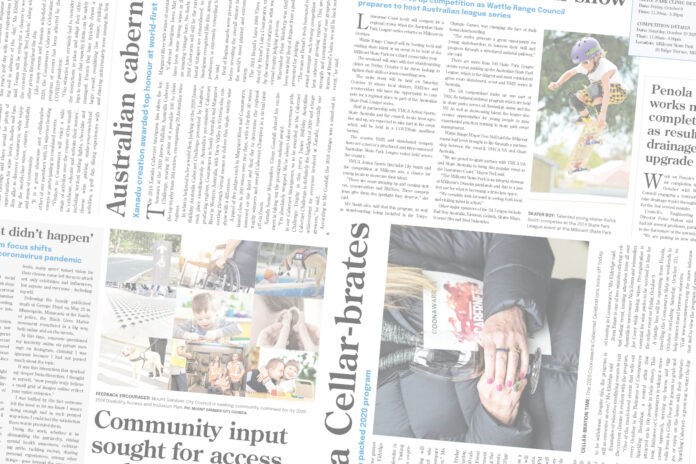Vivid memories of post-war radio serials like “Dad and Dave” and “Blue Hills” and early television shows were shared at the latest meeting in Millicent of the South East Family History Group.
Before the arrival of television to Mount Gambier in 1966, radio was a very important source of news and entertainment.
History group president Noel Boyle recalled buying a radio from the George Street premises of Neil McArthur Electrical with an embossed glass side pointing out the frequencies of the South Australian stations.
Mr Boyle said the family’s radio had been bought by his sister as a wedding anniversary present for their late parents and was now in her possession.
“When television did come to the region, there were just two stations and they only had programs from about 5pm until 10pm,” Mr Boyle said.
“We used to watch the test pattern before the daily programs began.
“One of our favourite TV shows was Bellbird which came on at 6.45pm.
“When I went to the United Kingdom, I was amazed to see Skippy the Bush Kangaroo in full colour transmission including green grass.
“On the other hand, when my English bride Sheila came to Australia, she was disappointed that a Royal Wedding was not being telecast as F-Troop was shown instead.”
The history group’s oldest member is 95-year-old retired farmer Tom Telford and he remembered the nationwide furore in the 1950s created when radio announcer Jack Davey made a “blue remark” on the air.
He said Mr Davey had been interviewing a young bride and he had asked her about her wedding night antics.
The childhood home for history group treasurer Les Bebbington was Streaky Bay on Eyre Peninsula.
Back in the 1960s, he said the only reliable radio signal came from the 5CL ABC studios in Adelaide while some other capital city stations could occasionally be heard.
“There was a garage proprietor in the main street who would blow a loud air whistle for the town to start the working day, have a lunch break and then signal the end of the day,” Mr Bebbington said.
“The whistle would sound at 12.30pm, the schools and shops would shut and we would all go home for lunch.
“We would listen to the radio news and the Blue Hills serial and then the whistle would sound again at 1.30pm.”
Cricket fan Fred Smith said live ball-by-ball television coverage of the test matches from England did not start until the fifth match of the 1972 series.
“Before then, we would stay awake in our beds until around 3am and listen to the wonderful commentary of the likes of Lindsey Hassett and Alan McGillvray,” he said.
Hatherleigh farmer Chris Skeer said his father was unwilling to part with the necessary four pounds and 10 shillings (now $9) for a set of headphones 60 years ago until it was proven they would work on his crystal set.
History group member John Nicholson explained the difficulties of installing radios in his first two cars: a Morris and a Torana.
Professional house painter and history group vice president Kelvin Edlington displayed four of his radios which have accompanied him on the job since the 1960s.
The South East Family History Group next meets at its Millicent research centre on August 25 when retired broker Bill Cull will talk about the wool industry.



